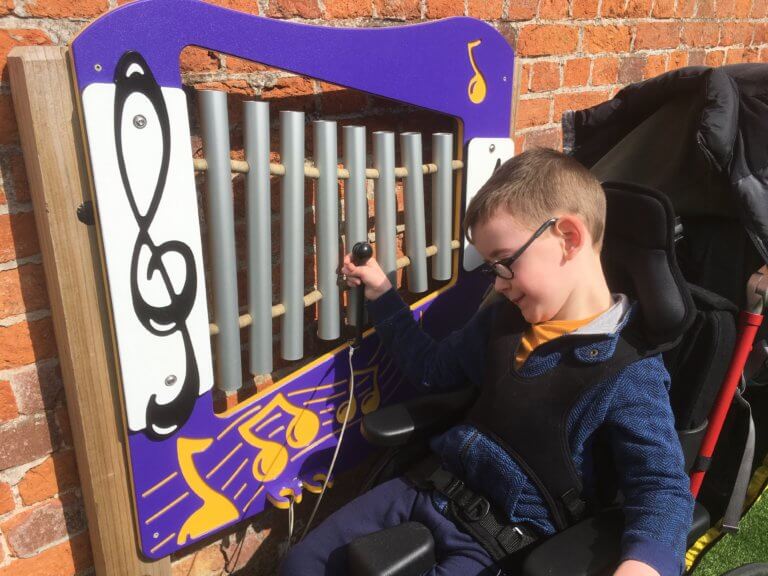8 Ideas for Using Music for Therapy and Exercise
Music can be a powerful tool for emotional and physical development in children.
Making music offers opportunities to improve communication. Our child can express emotion through the noises that they make, and we can practice back and forth exchanges, turn-taking and listening skills by making sounds together.
Using musical instruments can be beneficial physically, improving our child’s breathing and fine and gross motor skills. Dancing and moving to music is also great fun!
Music can also help regulate the nervous system. Slow, soft music and sounds are calming and can ease anxiety, while loud, up-tempo music is alerting, which helps an under-stimulated nervous system.
Below we share some of the fantastic ways that music can be used at home to support our child’s development. Enjoy!

Musical Ideas to try at Home
Your child can play a musical instrument, no matter what their hand skills are.
If they use their hand in a fist with minimal control, they can tap a keyboard or a drum as an easy way to get some cause and effect.
If they can hold onto implements in their hand, they can enjoy a rattle or tambourine, or try and hit a drum with a stick.
If a child has more dexterity in their hands and can point with one finger, we can encourage them to play with their pointing finger. If necessary hold their other fingers to keep just the pointing finger free. Practice pressing a keyboard key with this finger, pressing buttons on musical toys, strumming a guitar or using the pointing finger for musical games on a tablet. If our child has difficulty isolating their pointing finger, this video from Our Home may be helpful!
If we don’t have any instruments at home we can make our own using everyday objects. A wooden spoon and some upside down saucepans can become a drumkit, and a plastic bottle with some rice in it makes a great shaker. Check out this blog post for some other easy DIY instrument ideas.
Blowing can be a difficult activity for some but works the mouth muscles to help develop speech and feeding skills as well as help with breathing control.
Try putting a harmonica, recorder or other wind instrument near your child’s mouth so they get great cause and effect from their blowing and to encourage longer blows.
Blowing through a straw in soapy water can create loads of bubbles and can make some lovely noises – if they blow harder, more bubbles appear. You could blow a tune to a song to try to encourage longer blows. This can be great for increasing their strength for breathing.
Singing songs while doing specific actions can both fun and helpful for your child. It’s a novel way to meet a child’s specific movement/physical needs, and the music offers a great cue of what is to take place, helping manage expectations and increase understanding.
For example:
-
The Grand Old Duke’s of York: when the men go ‘up’ you can all stand or put your arms up in the air. When they go ‘down’ you can sit down or put your arms down.
-
Row Row Row the Boat: stretch your child legs out into a long sit while you move to and sing this song. This is a brilliant way to stretch out hamstrings.
-
This is the Way We: this song can be adapted to encourage a child to do all all kinds of movements and activities. For example, ‘this is the way we touch our toes, touch our toes, touch our toes, this is the way we touch our toes on a cold and frosty morning’, ‘this is the way we brush our teeth’, ‘this is the way we put on a coat’.
-
Five Little Monkeys Bouncing on a Bed: brilliant for jumping and moving games.
-
When You’re Happy and You Know It: you can use this song to encourage any movement, e.g. when you’re happy and you know it open you hands/move your arms/jump up and down.
-
This Little Piggy Went to Market: lovely for massaging or stretching fingers and toes.
Songs can be a clear indication of the start of an activity or the end so that, when regularly used, children know what is coming next. For example Mr Tumble’s Hello and Goodbye songs could be used at the beginning and end of an activity, first thing in the morning and last thing at night or at the start and end of a therapy session.
You can also use the same song to help your child manage an activity. For example you could sing ‘twinkle twinkle little star’ while you give your child a stretch, or brush their hair or teeth. If your start and end the activity as you start and finish the song, your child will know how long the activity will be going on for, and when the end is near. This will make the whole process easier for them.
YouTube is bursting with music videos that children can sing and dance to. The Little Baby Bum channel for example has hours and hours of nursery rhymes and children’s songs with cartoon characters.
CBeebies Songs has a huge library of songs with everything CBeebies, from Something Special to Andy’s Dinosaur Adventures. There should be something for everyone to enjoy and hopefully move and sing along to.
Curly Cath has lots of wonderful videos to help children sing, dance and make music. The videos are aimed at under fives but may also be suitable for older children with learning difficulties.
Dance is a lovely form of exercise for all children, no matter their abilities or mobility.
Flamingo Chicks have produced an amazing series of inclusive dance videos, with Makaton signing and adaptations for different needs and with a different theme for each session. This Inclusive Space Dance Class is great example of their work. The instructor is standing but moves can easily be adapted, Do visit their YouTube channel for more.
Over lockdown, Bristol Bears ran a wonderful weekly “DanceTime” dance session for those with profound needs. Moves are simple and seated, You can find the videos on their YouTube channel.
We love this series of bite-sized creative dance sessions from Wriggle Dance Theatre. The instructions are clear and children are given plenty of opportunity to be creative.
Just Dance Kids is a great game where children can enjoy learning dance routines to well known songs. You don’t need a gaming system to enjoy the Just Dance experience – there are plenty of videos on YouTube children can dance along to. If your child is a wheelchair user or not yet able to stand, there are seated dances available. We’ve found a Just Dance seated playlist here, and you find more songs by searching ‘Just Dance’ and ‘Seated’, ‘Sitting’. ‘Car’ or ‘Chair’.
Chelsie Hill has lots of wheelchair dance tutorials on her YouTube channel. Songs are contemporary and carefully choreographed, and of varying difficulty levels. These would be particularly good choices for teens and tweens.
Soundabout have produced some lovely videos for children with learning difficulties. They encourage children to sing, play and make music and sounds any way they can.
Singing Hands have created this excellent library of popular songs and nursery rhymes all sung using Makaton.
You can also use singing as a way to prompt communication yourself. Sing most of a very familiar or favourite song but leave out the words at the end of the line for your child to fill in with words or noises.
Sensory Soundbox (£2.99 – Apple and Android). Just a touch on the screen produces a wide variety of sounds and noises. As you move your fingers/ hand the noises change. Vey calming or stimulating, depending on the setting and wonderful feedback for cause and effect.
Baby’s Musical hands (free – for Apple and Android)- musical and colourful app – any touch will play a piano sound.
Finger paint (free for Apple and Android) – opportunity to paint with different colours and sounds.
Baby Mozart (free for Apple and Android) – Plays different relaxing music including instrumental, nursery rhymes, white noise and with some funny noises and flashcards too.
Duck Duck Moose – Musical Me HD (free on Apple and Android) – several simple games aimed at young children with early developing pointing finger control.






